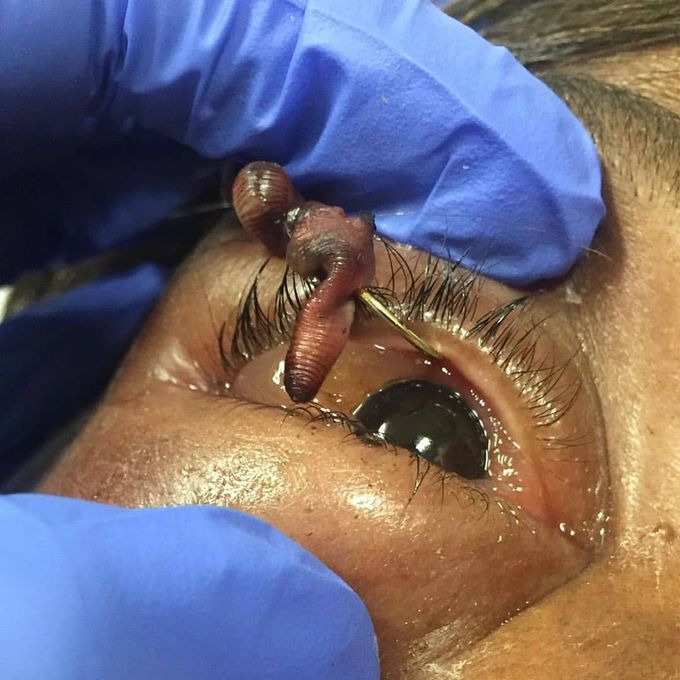


Case of a patient with a fish hook lodged in the eyelid with the bait (worm) still attached.
Thankfully the hook missed the eye and was only in the lid. After some propofol as sedation the hook was easily removed. Ocular penetrating fish-hook injuries represent an unusual and very dangerous ocular trauma. Management of these injuries depends on type and location of the hook above all. There are two primary surgical techniques for the removal of fish-hooks embedded in nonocular tissue in ophthalmic injuries. (a) The âback-outâ or âretrogradeâ method, useful for barbless hooks, refers to backing the hook out through its entrance laceration. In globe trauma its use can bring excessive damage. (b) The âadvance and cutâ technique, the most useful method in anterior segment fish-hook laceration, consists of performing a controlled surgical incision to allow a traumatic release of the point and barb. The fish-hook is advanced through the tissue causing a second wound, the barb is then cut, and the remaining hook is backed out through the entry wound. Credit: @hamiltoneyeinstitute
Hemodynamic stimuli&nonhemodynamic stimuliEffects of sugar on teeth


